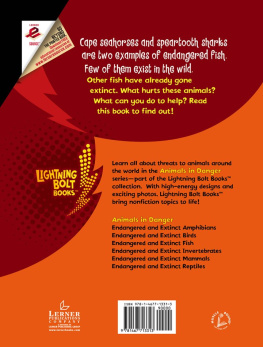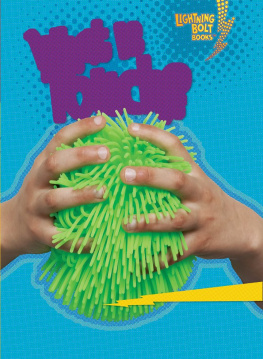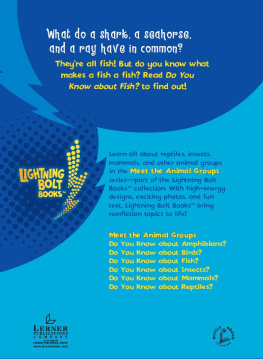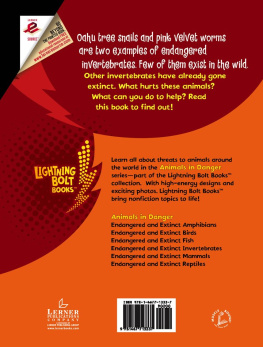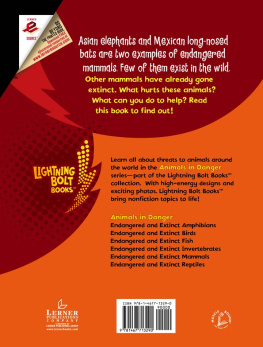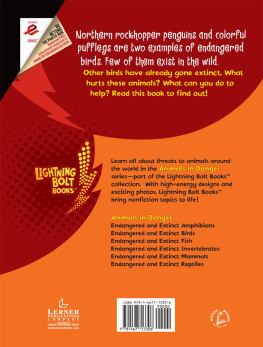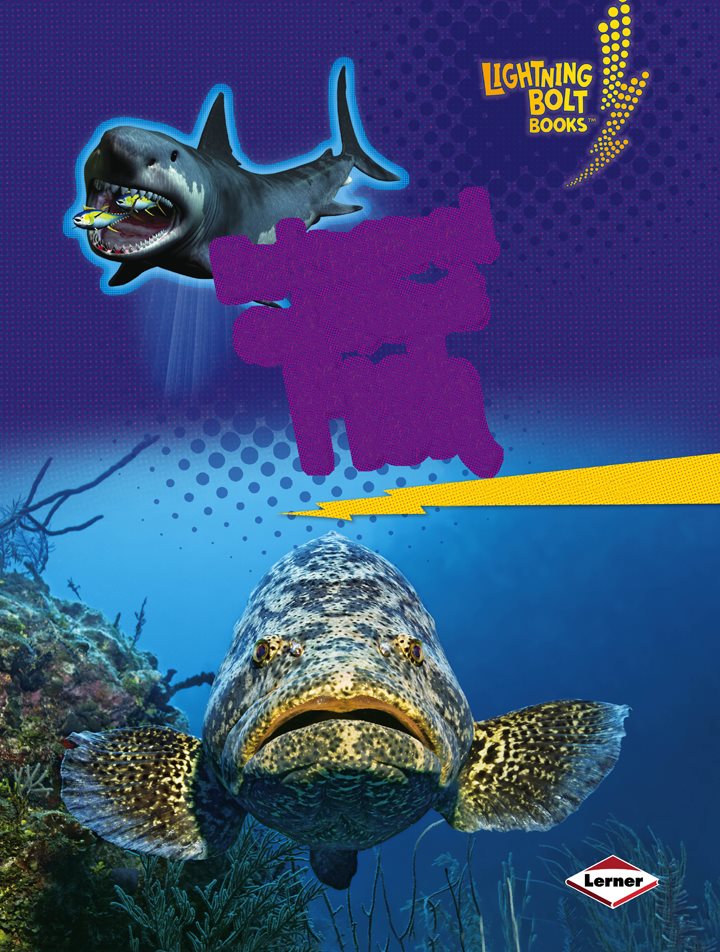Endangered
and Extinct
Fish
Jennifer Boothroyd
For Jack
-J. B.
Copyright 2014 by Lerner Publishing Group, Inc.
All rights reserved. International copyright secured. No part of this book may be reproduced,
stored in a retrieval system, or transmitted in any form or by any meanselectronic, mechanical,
photocopying, recording, or otherwisewithout the prior written permission of Lerner Publishing
Group, Inc., except for the inclusion of brief quotations in an acknowledged review.
Lerner Publications Company
A division of Lerner Publishing Group, Inc.
241 First Avenue North
Minneapolis, MN 55401 U.S.A.
For reading levels and more information, look up this title at www.lernerbooks.com
Library of Congress Cataloging-in-Publication Data
Boothroyd, Jennifer, 1972
Endangered and extinct fish / by Jennifer Boothroyd.
pages cm. (Lightning Bolt BooksAnimals in danger)
Includes index.
ISBN 9781467713313 (lib. bdg. : alk. paper)
ISBN 9781467724944 (eBook)
1. Extinct fishesJuvenile literature. 2. Endangered speciesJuvenile literature. I. Title.
QL617.7.B66 2014
597.168dc23
2013019750
Manufactured in the United States of America
1 PC 12/31/13
Table of Contents
Helping Endangered
Fish
What You
Can Do
A Remarkable
Recovery
Fish
Fish are special animals. They
have backbones. They use
gills to breathe underwater.
They have fins.
Fish use their
fins to swim.
These bluefin tuna
are endangered.
There are many types of fish in
the world. Some are endangered.
Endangered fish are in
danger of dying out.
Endangered
Fish
Winter skates are found in
the Atlantic Ocean.
They have long tails.
These fish
can grow
up to feet
(1.5 meters)
long.
These fish are
dying out. Too many
people have caught
them for food.
Winter skates swim in shallow
water.
They glide along
the ocean bottom.
The winter skate is
nocturnal. That means it
is more active at night.
Look at this huge fish!
The Atlantic goliath grouper
can grow more than feet
(2 m) long.
Someone caught an
Atlantic goliath grouper
that weighed pounds
(309 kilograms)!
The Atlantic goliath grouper
can have more than three
rows of teeth.
Not many of these fish
are left in the wild.
Bocaccio rockfish live in the
Pacific Ocean.
Their backs
are spiny.
The bocaccios
spines can be
poisonous.
Bocaccio rockfish
eat other small fish.
Water pollution has endangered
this fish. Trash and dirt in the
water cause pollution.
The cape seahorse lives near
South Africa. This tiny fish
has one fin and a strong tail.
Seahorses move
very slowly.
The cape seahorse does
not have teeth or a
stomach.
This fish swallows
its food whole.
The cape seahorse is
at risk of dying out.
Australia is home to the
speartooth shark. This
shark is endangered.
Speartooth sharks can
live in both salt water
and freshwater.
This fish uses
its teeth to eat
smaller fish.
Thespeartoothsharkhasmore
thanfiftyrowsofteeth!
Extinct
Fish
Pteraspis is extinct. It has
died out.
This fish had a
bony shield around its
head.
This creatures
long, pointed snout
helped it swim fast.
Pteraspis was inches (20
centimeters) long. Its fossils
have been found in Europe.
Fossils are traces
of plants or animals
that lived long ago.
This big fish was Xiphactinus.
It grew more than feet
(4 m) long.
Thats as long
as a hippopotamus.
This fish died out
millions of years ago.
Xiphactinus had a large lower
jaw. The jaw curved up.
Xiphactinus ate large fish.
This fossil was
found in Kansas.
This flat fish was called Eobothus.
Both of its eyes were on one
side of its body.
Eobothus is extinct.
Its fossils have
been found in Asia.
Eobothus was small. It was
about inches (10 cm) long.

